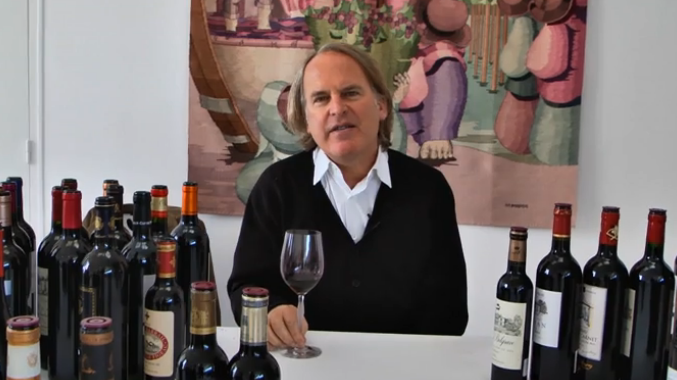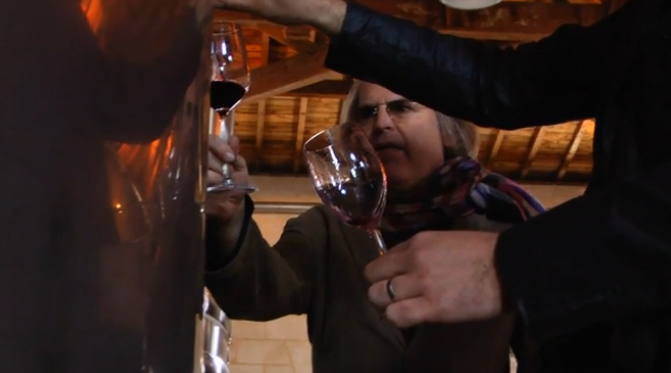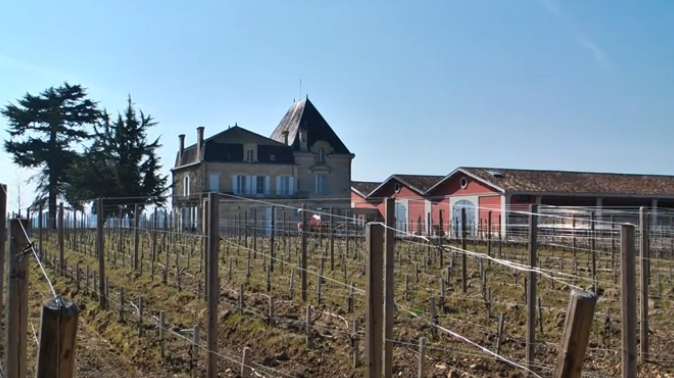Tasting Report: Great Winemaking and My Top 100 2012 Bordeaux
 The 2012 vintage may be one of the most uneven years I have ever tasted in my 30 years of tasting Bordeaux from barrel. A handful of exceptional wines exist in 2012 due to a combination of great vineyard position, amazingly precise viticulture, and subtle winemaking. Those reds are from either Pomerol or Pessac-Léognan, or top dry whites.
The 2012 vintage may be one of the most uneven years I have ever tasted in my 30 years of tasting Bordeaux from barrel. A handful of exceptional wines exist in 2012 due to a combination of great vineyard position, amazingly precise viticulture, and subtle winemaking. Those reds are from either Pomerol or Pessac-Léognan, or top dry whites.
I think that the best comprable vintage for 2012 at the moment is 1998 when the Right Bank, such as Pomerol and St. Emilion, made amazing reds that hark back to great years of the 1940s and 1950s. And the Left Bank made very good to outstanding wines in 1998, but slightly diluted due to rain during the harvest in late September and October. The best reds of 2012 could also be compared to the refined and beautiful 2001 – which in some cases made better wines in such appellations as Pomerol, St. Emilion and Pessac-Léognan than the prized 2000.
One winemaker, who made the best wine of my tasting of about 600 barrel samples, believes his 2012 red is better than his 2001. “My wine has more structure that the 2001,” said Olivier Berrouet, the winemaker of Château Peturs, the legendary Pomerol estate. “We had perfect maturation despite the difficulties of the growing season.”
 Indeed, on paper, the grape-growing season in 2012 looked like a nightmare for Bordeaux wine producers. The spring was too cold and wet and gave bad flowering. The summer was a combination of too much heat and too little humidity, and then the opposite. And for most of September and October, it rained too much. Problems with various maladies in the vineyards, from oidium to gray rot, also took hold. And most wineries were caught in lots of rain during the long and late harvest.
Indeed, on paper, the grape-growing season in 2012 looked like a nightmare for Bordeaux wine producers. The spring was too cold and wet and gave bad flowering. The summer was a combination of too much heat and too little humidity, and then the opposite. And for most of September and October, it rained too much. Problems with various maladies in the vineyards, from oidium to gray rot, also took hold. And most wineries were caught in lots of rain during the long and late harvest.
“It’s really a good surprise to make something exceptional when we had such difficult growing and harvest conditions,” said Jean-Pascal Vazart, technical director of Pomerol’s L'Evangile.
In the end, the greatest wines were made by those who best managed all these vagaries of weather and then selected only the best grapes, and picked and vinified them in an elegant and refined way.
“Making excellent wine had nothing to do with luck in 2012,” said Alexandre Thienpont, who made the superb Le Pin as well as Vieux-Château-Certan. “It had to do with a lot of hard work.”
No matter how hard some worked, they couldn’t make acceptable wines. For instance, a number of Sauternes producers, namely Château d’Yquem and Rieussec, decided not to make any sweet wines in 2012.
However, for the most part, the top producers made something very good to outstanding quality in red and dry white wines.
 One point I keep on thinking about in 2012 is how the top producers of the Medoc, from first-growths to fifths-growths, all made wines very close in quality. In other words, the longtime and accepted hierarchy of pricing and the 1855 Classification were less evident in 2012. For example, my best wine from the Medoc was third-growth Château Palmer. And then I was impressed with such châteaux as Mouton-Rothschild and Leoville-Las-Cases, among others.
One point I keep on thinking about in 2012 is how the top producers of the Medoc, from first-growths to fifths-growths, all made wines very close in quality. In other words, the longtime and accepted hierarchy of pricing and the 1855 Classification were less evident in 2012. For example, my best wine from the Medoc was third-growth Château Palmer. And then I was impressed with such châteaux as Mouton-Rothschild and Leoville-Las-Cases, among others.
I was a little concerned that some winemakers pushed their wines a bit too much in their wineries, making them overly tannic and slightly unbalanced. For instance, I found Cos d’Estournel a little bit like this, but the aging in barrel should soften some of the rough edges, and the wine is still outstanding for the vintage.
Most of the best châteaux did the complete opposite and focused on making harmonious wines. Some even created new methods to emphasize the fruit and character in their grapes. For example, superstar and biodynamic proponent Pontet-Canet started aging about one-third of its new wines in specially designed cement pods to “emphasize the sincere character of the biodynamically grown grapes on the property.” The 2012 Pontet-Canet is sensational quality for the vintage.
I am excited about the best wines in 2012 and I am personally interested in buying some as I think about the joy the 2001s give now and will in the future. My problem is, like everyone else, the price for 2012, even though very few have come out with their prices. Sure, some châteaux don’t need to drop their prices a lot considering they are relatively reasonably priced for their quality. However, some – such as first-growths – really have to slash prices to generate any interest in en primeur, or futures.
Thanks to a new government in China and a strong anti-corruption campaign, expensive wines such as first-growths have lost a huge part of the market. Wine merchant friends in China say they sell about half the amount of pricey wines than they did just six months ago. Lesser growths are selling well though.
Besides, Chinese consumers, like most Asians, want to buy current vintages for drinking from Bordeaux. They are not into futures, or en primeur. And most of the big buys in China for 2009 or 2010 were by speculators, both wine merchants themselves and/or investors. That’s why more than $100 million in 2010 orders have been cancelled in the last year.
However, none of that has to do with the quality of 2012 Bordeaux. I have to applaud so many in Bordeaux for making very good to outstanding wines in a very difficult vintage. They certainly are some of the best vine growers and winemakers in the world.
Below are my top 100 2012 Bordeaux barrel samples and their tasting notes. I’ve also included PDFs of the Top 100 sorted by score and alphabetically.